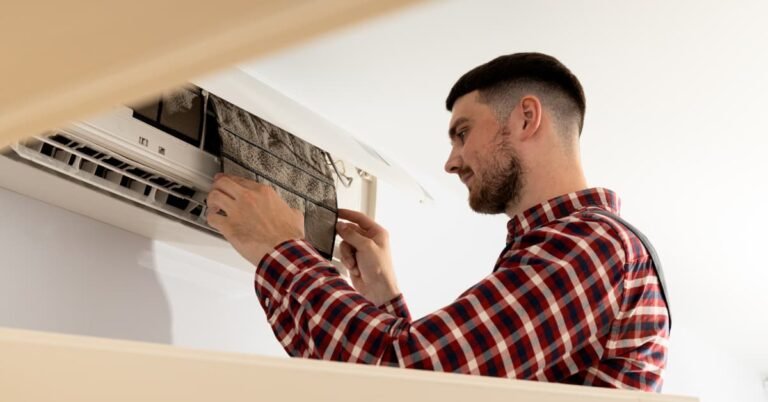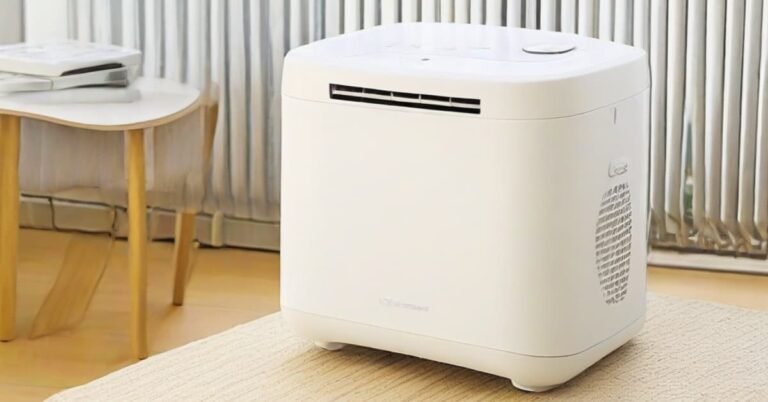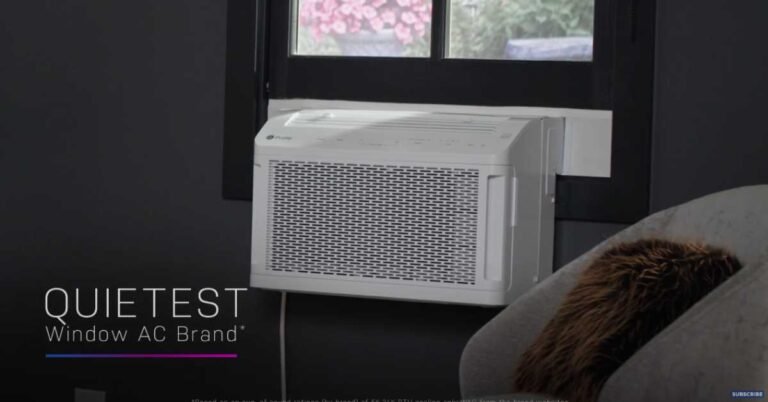What Does E5 Mean On A Portable Air Conditioner?
The E5 code on a portable air conditioner signifies a specific error condition that requires attention. This error can cause disruption in the cooling process, affecting the unit’s performance. Understanding the E5 code is crucial for troubleshooting and resolving the issue.
By understanding the causes and solutions for the E5 code, you can diagnose and fix the issue effectively.
From clogged air filters to faulty temperature sensors, refrigerant leaks, malfunctioning fan motors, or electrical issues, we’ll guide you in identifying and resolving the E5 code on your portable air conditioner.
What Does E5 Mean On A Portable Air Conditioner?
E5 is an error code commonly seen on portable air conditioners. When the display shows E5, it means there is a problem that needs troubleshooting or fixing.
This error code may vary depending on the air conditioner’s brand and model, but generally indicates a temperature or sensor issue.
When you come across the E5 error code, refer to the user manual or reach out to customer support for guidance on how to resolve the issue. The best approach is to turn off the air conditioner, unplug it, and then inspect for any visible issues like blockages or disconnected cables.
If the issue continues after these initial checks, it’s best to contact the manufacturer or a certified technician for further help.
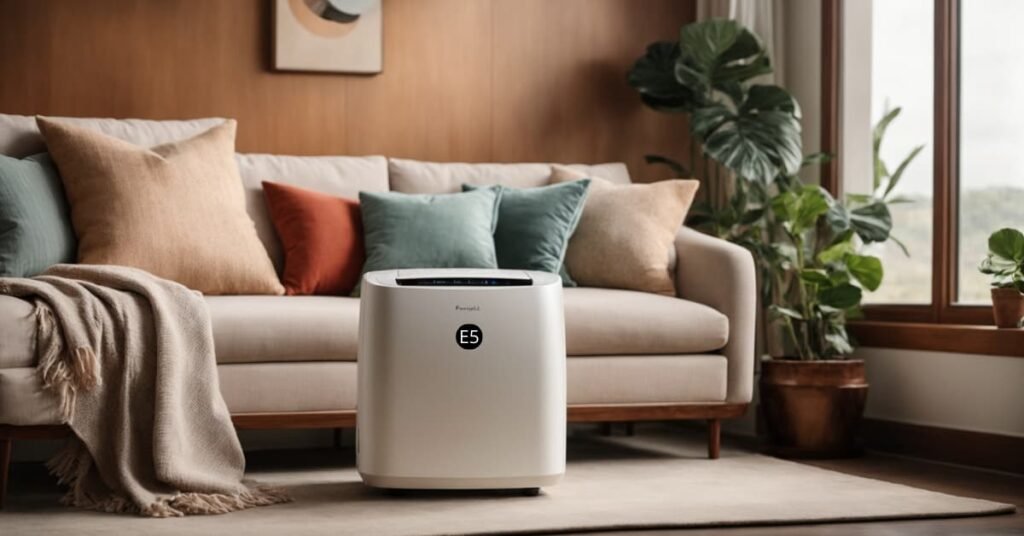
Possible Causes and Solutions
1. Clogged or Dirty Air Filters
logged or dirty air filters can trigger the E5 error on a portable air conditioner. When filters are blocked, airflow becomes restricted, hindering the unit’s performance. In turn, this can lead to overheating and trigger the E5 error.
Regular filter maintenance is essential to ensure proper cooling and prevent malfunctions.
Solution:
To fix this problem, follow these steps-
1. Turn off the air conditioner and unplug it from the power source.
2. Locate the air filters, usually located behind a cover on the front or side of the unit.
3. Carefully remove the filters.
4. Use a vacuum or rinse the filters with lukewarm water to remove dirt and debris.
5. Allow the filters to air dry completely before reinstalling them.
6. Once dry, place the filters back into their original position.
7. Ensure they are secure and replace the cover if removed.
8. Plug in the air conditioner and turn it on.
9. Check if the E5 error persists.
2. Faulty Temperature Sensors
A faulty temperature sensor can trigger the E5 error on a portable air conditioner. The sensor is responsible for measuring the temperature in the room and adjusting the cooling accordingly.
If the sensor malfunctions, it can cause inaccurate temperature readings, leading to the E5 error.
Solution:
To address this issue, follow these steps:
1. Turn off the air conditioner and unplug it.
2. Locate the temperature sensor, usually positioned near the front of the unit’s intake area.
3. Carefully remove any outer coverings or panels to access the sensor.
4. Inspect the sensor for any visible damage or loose connections.
5. If there are loose connections, gently reattach them.
6. If the sensor appears damaged, contact the manufacturer for a replacement.
7. Once the sensor is secured or replaced, reassemble any removed components.
8. Plug in the air conditioner and turn it on.
9. Check if the E5 error is resolved.
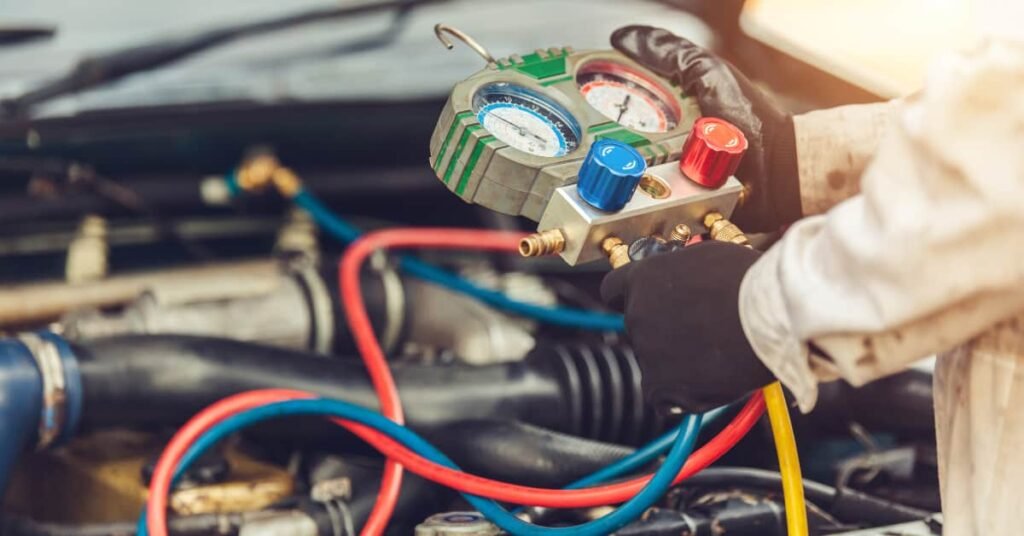
3. Refrigerant Leaks
A refrigerant leak can cause the E5 error on a portable air conditioner. Refrigerant is responsible for cooling the air, and a leak can disrupt the cooling process.
As a result, the air conditioner may not function properly and trigger the E5 error.
Solution:
To resolve a refrigerant leak issue, it is recommended to seek professional assistance. Follow these general steps:
1. Turn off the air conditioner and unplug it to avoid electrical hazards.
2. Contact a certified HVAC technician who specializes in air conditioning repairs.
3. Provide detailed information about the E5 error and suspect refrigerant leak.
4. The technician will inspect the unit, locate the leak, and assess the extent of the damage.
5. Depending on the severity of the leak, the technician may repair or replace the affected components.
6. The technician will recharge the system with the appropriate amount of refrigerant.
7. Regularly maintain the air conditioner and ensure there are no refrigerant leaks in the future.
4. Malfunctioning Fan Motors
A malfunctioning fan motor can trigger the E5 error on a portable air conditioner. Fan motors circulate air within the unit.
If they fail to operate correctly, inadequate airflow can lead to overheating and trigger the E5 error.
Solution:
To address a malfunctioning fan motor issue, follow these steps:
1. Turn off the air conditioner and unplug it.
2. Locate the fan motor, usually positioned behind the unit’s cover or housing.
3. Carefully inspect the fan motor for any visible obstructions or damage.
4. Remove any debris or foreign objects obstructing the fan blades.
5. Check the fan motor for any loose connections or wiring issues.
6. If there are loose connections, carefully reattach them.
7. If the fan motor(s) appear damaged or faulty, contact the manufacturer for a replacement.
8. Once the fan motor(s) are secure or replaced, reassemble any removed components.
9. Plug in the air conditioner and turn it on.
10. Check if the E5 error persists.
5. Electrical Issues or Power Supply Problems
Electrical issues or power supply problems can trigger the E5 error on a portable air conditioner.
Problems with the electrical circuit or voltage irregularities can disrupt the functioning of the unit and cause the E5 error to appear.
Solution:
To address electrical or power supply problems, follow these steps:
1. Ensure the air conditioner is properly plugged into a working electrical outlet.
2. Check the circuit breaker or fuse box to ensure there are no tripped breakers or blown fuses.
3. Reset any tripped breakers or replace blown fuses as necessary.
4. If the air conditioner operates on batteries, check if they need replacement.
5. Verify that the power supply meets the manufacturer’s specifications for the unit.
6. If there are ongoing electrical issues or voltage irregularities in the property, consult a licensed electrician for further assistance.
7. After addressing any electrical or power supply problems, plug in the air conditioner and turn it on.
8. Check if the E5 error is resolved.

Preventive Maintenance and Tips to Avoid the “E5” Error
To avoid the “E5” error code on your portable air conditioner, follow these preventive maintenance tips:
Tips 1: Clean or replace air filters regularly every few weeks. Clogged filters restrict airflow, causing overheating and potential errors.
Tips 2: Ensure the unit is placed on a flat surface to prevent vibration or movement that may impact internal components.
Tips 3: Keep the area around the air conditioner clear of obstructions or debris to allow proper airflow.
Tips 4: Inspect and clean the condenser coils annually or as recommended by the manufacturer to maintain efficient cooling.
Tips 5: Check for any loose electrical connections and tighten them if necessary to avoid electrical issues.
Tips 6: Routinely inspect the fan blades for any debris or dust buildup and clean them using a soft brush or cloth.
Tips 7: Avoid overloading the power outlet by connecting multiple high-energy devices on the same circuit to prevent voltage irregularities.
Tips 8: Store the air conditioner in a clean and dry place when not in use to prevent dust accumulation and potential damage.
Tips 9: Read and follow the manufacturer’s instructions and guidelines provided in the user manual for specific maintenance recommendations.
By adhering to these preventive maintenance practices, you can reduce the chances of encountering the “E5” error code and ensure optimal performance of your portable air conditioner.
Conclusion
Understanding the meaning of the E5 code on a portable air conditioner is crucial. By knowing what this error code signifies, you can troubleshoot and resolve any issues that arise. Whether it’s a problem with the air filters, temperature sensors, refrigerant levels, fan motors, or electrical components, it’s important to address the E5 code promptly.
Remember to consult the user manual or seek professional assistance if needed. By taking proactive steps and staying informed, you can keep your portable air conditioner functioning efficiently and enjoy a cool and comfortable environment.

